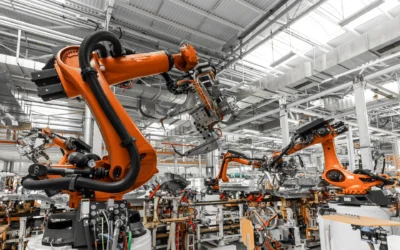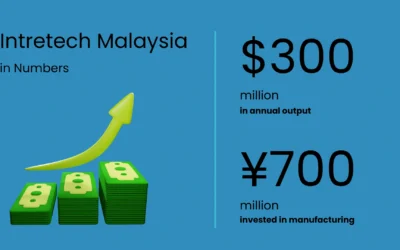Embracing the Circular Economy in Manufacturing:
A Path to Sustainable Innovation
In an era where our planet’s resources are dwindling and environmental crises are escalating, the circular economy offers a revolutionary way to rethink and redesign our approach to production and consumption.
So, what exactly is a circular economy, and how can it reshape the manufacturing industry to transform it from a linear to circular economy and build a sustainable future?
The concept of the circular economy is reshaping the manufacturing industry by shifting away from the traditional linear model of “take-make-dispose” towards a regenerative system.
With this approach manufacturers like us, aim
- to minimise waste
- extend the lifecycle of products
- effectively utilise resources.
As environmental concerns and resource scarcity become more pressing, the circular economy offers a sustainable alternative that benefits businesses, consumers, and the planet.
Understanding the Circular Economy
At its core, the circular economy focuses on creating a closed-loop system where resources are reused and recycled, minimising waste and reducing the need for new raw materials.
The key principles of the circular economy include:
- Design for Longevity and Recyclability:
Products are designed to last longer and be easily repaired, reused, or recycled, thus extending their lifecycle and reducing waste. This concept is crucial in reducing the environmental impact and resource depletion associated with traditional manufacturing processes (Infosys BPM). - Closed-Loop Systems:
Implementing systems that allow for the recovery and reuse of materials. This includes reverse logistics for collecting used products and advanced recycling technologies to process materials efficiently. - Regenerative Practices:
Focusing on the use of renewable energy and materials, the circular economy promotes practices that restore natural systems and reduce reliance on finite resources.
Whilst the principles of circularity are simple, innovative ways to implement them run deep in each business’s operational practices. How you inculcate regeneration as an integrative part of your production cycle as a manufacturer is a path waiting to be discovered.
Application in the Manufacturing Industry
There is no one way to the go, but manufacturers like us can adopt circular economy principles through several commonly used strategies:
- Eco-Design and Innovation: Adopt eco-design principles, focusing on sustainability from the outset. This includes selecting materials & products that are easier to recycle and designing products that are easy to disassemble.
Many manufacturers are opting for bioplastics, recycled metals, and natural fibers. For instance, the automotive industry often uses recycled aluminum and bio-based plastics in vehicle production.
Explore more about Intretech’s automotive solutions.
- Technology Integration: Advanced technologies like AI, blockchain, and IoT can enhance resource tracking and optimise production processes. These technologies enable us to improve supply chain transparency and efficiency, thus supporting our circular economy’s goals.
- Collaborative Efforts: Collaboration across the value chain is crucial for implementing circular economy practices. Working closely with suppliers to source sustainable materials and with customers to encourage product returns and recycling can open new insights towards sustainable innovation.
- Policy and Incentives: Governments play a vital role in facilitating the transition to a circular economy. Policies promoting the right to repair, and the use of recycled materials can accelerate the adoption of circular economy practices.
Amidst the sustainability revolution, governments across the globe contribute towards a greener economy through their operational policies.
Benefits of the Circular Economy
The circular economy offers numerous benefits, particularly for the manufacturing sector:
- Environmental Benefits: By reducing waste and promoting efficient use of resources, the circular economy can significantly lower greenhouse gas emissions. For example, applying circular principles to key industrial materials could reduce global CO2 emissions by 40% by 2050. This is equivalent to eliminating the current emissions from all forms of transport globally (BSI).
- Economic Opportunities: Circular practices can unlock new revenue streams and cost savings. For instance, UK businesses could benefit by up to £23 billion annually through improvements in resource efficiency. ( Source:Wrap)
The circular economy also fosters innovation, as seen in companies like Mobius, which use waste lignin from the paper industry to create biodegradable plastics. - Social Benefits: The circular economy can create new jobs and promote social equity by encouraging the development of new business models and services. This includes refurbishment and remanufacturing industries, which provide employment opportunities and foster economic growth.
Source: Circle Economy Foundation
Challenges and Future Trends
Despite the benefits, transitioning to a circular economy presents challenges, such as the need for significant investments in new technologies and infrastructure, regulatory complexities, and changing consumer behaviours.
However, the future of circular manufacturing is promising. Emerging technologies, such as 3D printing and advanced robotics, offer new opportunities for sustainable production. In conclusion, the circular economy provides a comprehensive framework for achieving sustainability in the manufacturing sector.
As manufacturers, we have the right resources to rethink how we design, produce, and promote consumption of goods. We can build a resilient economy that benefits people and the planet.
The journey towards a circular economy is complex but holds immense potential for creating a sustainable future.
Explore more related content
An Era of Development for Automotive Optics
An Era of Development for Automotive Optics: Merging Design and DevelopmentThe automotive optics industry is evolving....
The Innovations that Shaped Manufacturing
The Innovations that Shaped Manufacturing in 2024 Every year, different trends drive every industry, and manufacturing...
Intretech Shines at PMI Supplier Summit: A Collaborative Vision for Excellence
Intretech Shines at PMI Supplier Summit: A Collaborative Vision for ExcellenceIntretech Ltd, a forerunner in the...







